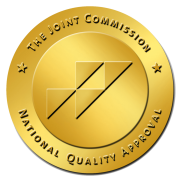Employers and employee assistance counselors and programs recognize that by offering a troubled employee a chance to turn their personal problems around, their business may still benefit from the investment in and contributions from frequently talented members of the team. Due to the highly regulated and litigious nature of identifying and confronting substance use disorders among employees, we highly recommend that specialists from human resources and employee assistance are consulted.
RELAPSE PREVENTION AT WORK
The drink and/or drug was the solution for an innate, poor response to endogenous dopamine.
The alcoholic addict needed pleasure and relief…
Things got out of control.
The real question is, “Why do people remain sober?”, not, “Why to people relapse?”.
Support recovery to prevent relapse!
Observe for Impending Relapse
- Disengagement from productive relationships
- Inability to exchange help and support with others
- Denying or minimizing problems
- Inability to manage impulses and regulate emotional responses
- Distorting the truth about substance use; concealing substance use; minimizing the effects of substance use; denying the effects and consequences of substance use
- Romanticizing drug use or renewed interest in substance use
- Returning to the company of drinking/ using friends.
Support recovery and develop and health-promoting workplace culture:
- Promote healthy activities, mindfulness practices, recreation and sober celebrations in the workplace
- Allow flexibility in schedule and encourage participation in meditation, mutual support group attendance, and healthy activity/ exercise
- Establish workplace culture which recognizes employee achievement of health goals (completion of treatment, periods of continuous sobriety, weight loss, lower blood pressure)
- Encourage recovery related events such as health promotional fairs, fundraisers, workshops/ brown bag lectures.
Develop positive peer support between employees:
- Promote peer support (member assistance programs) suitable for each workplace culture
- Encourage employees who have achieved health goals to mentor others who want to pursue similar goals
- Discourage peer pressure for drug/ alcohol use and replace with healthful celebrations and traditions.
Implement Workplace Recovery Motivational Constructs
- Negotiate long-term return to work contracts which include physical and EAP monitoring and aftercare participation
- Establish periodic employee self-appraisal for health, mental health and substance use
- Encourage employee follow-through on personal goal-setting and seeking help
- Provide supervisors tools to evaluate performance using behavioral criteria which indicate management of behavioral health (accept feedback, negotiate solutions, cooperate with others, express ideas rationally, accept and contribute to change and organizational improvement, etc.).
DO YOU HAVE ANY ADDITIONAL QUESTIONS OR COMMENTS?
866.594.8844 | contactus@twintowntreatmentcenters.com





